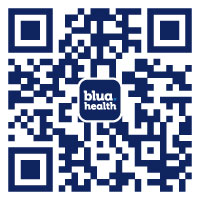Eczema, also known as dermatitis, is a term used to describe skin conditions that are characterised by irritation or inflammation of the skin. Eczema is the commnonest itchy rash in childhood.
There are two main categories of eczema. Contact eczema (exogenous eczema) occurs when substances or chemicals cause irritation that leads to an allergic reaction in the skin. "Constitutional" eczema (endogenous eczema), happens when there is a genetic, or inherited, tendency to develop the condition.
Causes of eczema
Often the cause of the eczema is unknown, or there may be a number of different factors all working together. Eczema often runs in families, but it is not spread from one person to another.
Chemicals, detergents, soap or shampoo can all irritate the skin. Some substances may not be irritants but if the skin becomes sensitised – or allergic – to them they may cause a reaction.
Symptoms of eczema
There are various types of eczema, with slightly different causes and symptoms.
- atopic eczema – This is the most common form of eczema. Atopy is the term that describes a family predisposition to a variety of allergic conditions, including asthma, hay fever and eczema. Atopic eczema usually affects the face, trunk, the backs of the knees and the front of the elbows. It usually starts in childhood, affecting 15-20% of children. Most grow out of the condition by adulthood, but it continues in 2-3% of adults.
- allergic contact eczema – this develops when the body's immune system reacts against a substance in contact with the skin. The rash usually starts at the site of contact with the substance but may then spread to other areas. For example, the nickel found in some jewellery may cause eczema on the ear lobes, wrists, and around the neck. Other causes of this type of eczema include rubber or perfume.
- irritant contact eczema – this is caused by frequent contact with everyday substances such as detergents in soaps or shampoos. The hands are most commonly affected.
- seborrhoeic eczema – this is less common. The rash is greasy and affects the scalp, face, armpits, groin and skin below the breasts. Some specialists think that a yeast known as pityrosporum may cause this condition. One form of the condition affects babies' scalps and is known as ""cradle cap"".
- varicose eczema – this occurs on the lower legs and is associated with varicose veins and related problems with circulation. The skin, often around the ankles, become scaly, itchy and inflamed.
- discoid eczema – this affects the arms and legs, usually in middle-aged men. The eczema occurs in numerous round patches.
Treatment of eczema
Home treatment
If the irritants that are causing the eczema are known, the best treatment is to avoid them. For example soaps, washing powders, bubble baths and shampoos, as well as any chemicals you may work with, may be the cause.
There are many products for eczema available without prescription from a pharmacist. These are usually emollients, which work by reducing water loss from the skin to keep it moist. They can be applied directly to the skin as creams or lotions. A good time to apply a cream is just after a bath. Oils or washes are also available that can be used in the shower or added to the bath.
Seborrhoeic eczema may be treated with creams or shampoos which contain anti-fungal medication or compounds containing selenium or coal tar are often effective. Putting mittens on babies can also help stop them scratching.
Medications
If emollients alone don't treat the condition, the next step is to use a steroid cream or ointment. Steroids calm flare-ups of eczema by suppressing the body's inflammatory response. There are different strengths of steroid and should be used for only a few days at a time. Apply them sparingly and use the mildest cream that works. Only mild steroids should ever be applied to the face. Using too much steroid cream can cause thinning of the skin, making it more fragile and leading to blemishes, wrinkles or visible small blood vessels. Mild steroid creams, such as 1% hydrocortisone, are available over the counter from the chemist, but stronger ones need a prescription from a doctor. Emollients should still be used at the same time as steroid creams. The pharmacist will be able to give you more advice.
Antihistamine tablets or medicines may be prescribed to reduce the itching of eczema. These may be sedating for night use, or non-sedating for use during the day.
Antibiotics may be needed if there is a bacterial infection complicating the eczema.
Severe eczema may occasionally need treatment with steroid medication in the form of tablets.
Hospital admission may be necessary in very severe cases. Sometimes the affected skin may need to be wrapped in bandages soaked with diluted potassium permanganate solution.
Diet
There is no evidence that any dietary changes can help eczema sufferers. Some people believe that the exclusion of egg or cow's milk from children's diets may help, but exclusion diets can lead to a calcium or protein deficiency and may cause more harm than good.
Other treatments that may help are non-steroid creams, herbal creams and homeopathy. Evening Primrose Oil capsules can be used (over the age of 1 year).
Disclaimer
This information was published by Bupa Group's Health Content Team and has been reviewed by appropriate medical or clinical professionals. To the best of their knowledge the information is current and based on reputable sources of medical evidence, however Bupa (Asia) Limited makes no representation or warranty as to the completeness or accuracy of the Content.
The information on this page, and any information on third party websites referred to on this page, is provided as a guide only. It should not be relied upon as a substitute for professional medical advice, nor is it intended to be used for medical diagnosis or treatment. Bupa (Asia) Limited is not liable for any loss or damage you suffer arising out of the use of, or reliance on, the information.
Third party websites are not owned or controlled by Bupa and any individual may be able to access and post messages on them. Bupa is not responsible for the content or availability of these third party websites. Last updated August 2017.










